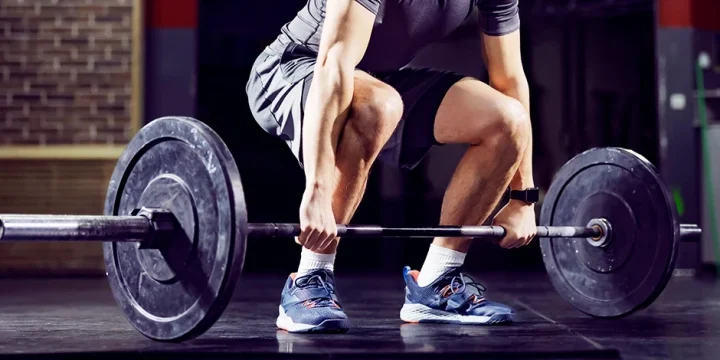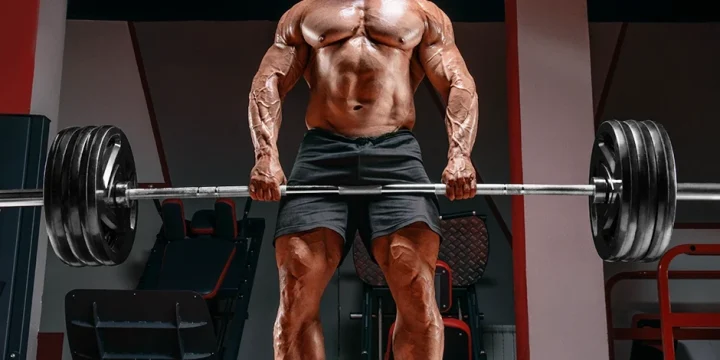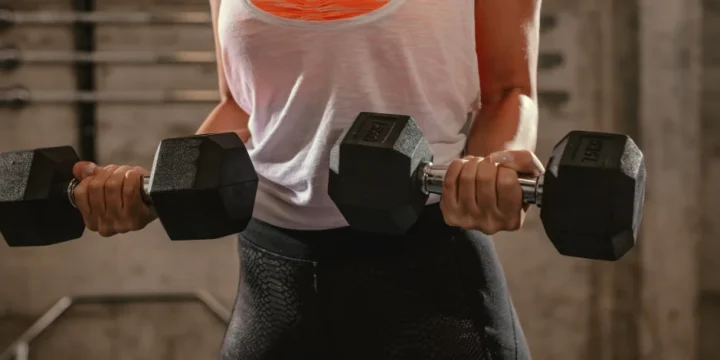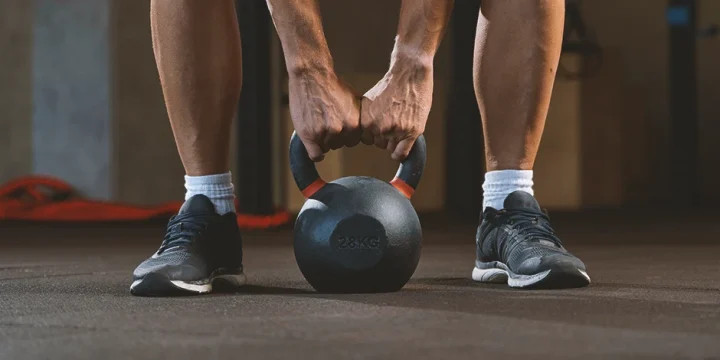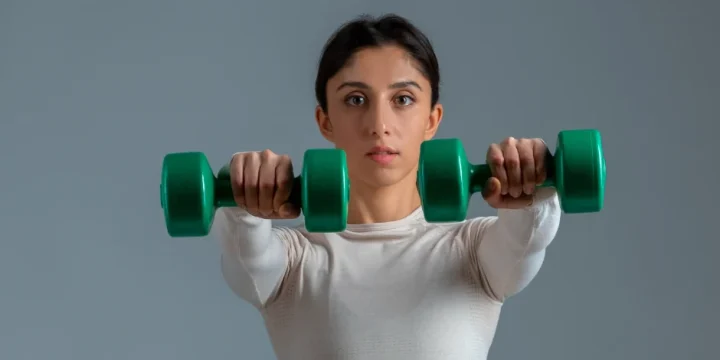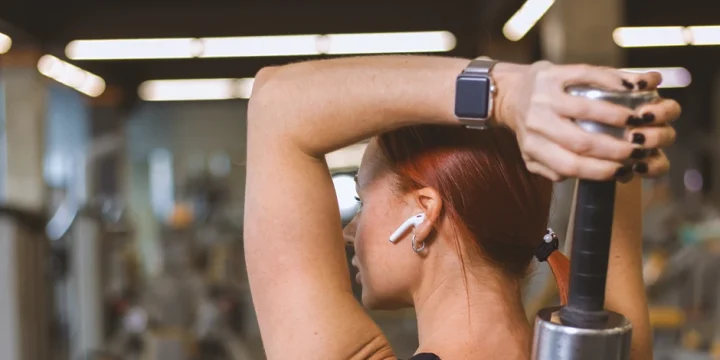Double-leg and single-leg Romanian deadlifts are the two best exercises for developing a strong and functional posterior chain.
However, many novice lifters use excessive knee-bending when performing Romanian deadlifts (RDLs), so I decided to make a step-by-step guide on executing the technique correctly.
Based on my experience as a certified personal trainer and 20-hour research, I compiled a list of the most advanced guidelines and advice to follow and perform the RDL technique properly.
After reading the article, you will have sufficient knowledge to perform the Romanian deadlift alone, the most useful variations to include in your training program, and much more.
Quick Summary
- To learn the proper RDL form, you must keep your hips neutral, fix the knee during the exercise, drive your hips to the ceiling, and learn to force the hamstrings and glute muscles to perform the movement without compensation.
- RDL variations include hip-banded Romanian deadlifts, trap bar Romanian deadlifts, deficit Romanian deadlifts, single-leg Romanian deadlifts, modified traditional deadlifts, and more.
- Romanian deadlifts, particularly the single-leg version, significantly enhance athletic performance, functional strength, and posterior chain resilience, as per a study published on the National Library of Medicine website.
- As a seasoned fitness trainer, I consider the Romanian deadlift to be an indispensable tool for building a strong, resilient, and balanced body.
How to Do a Romanian Deadlift Correctly

As a fitness trainer, I've found mastering the RDL technique crucial for my clients. It involves a slight knee bend, neutral hips for proper hip extension, and a hip-width stance, all essential for effective muscle activation.
Research in the National Library of Medicine shows that Romanian deadlifts, particularly the single-leg version, significantly enhance athletic performance, functional strength, and posterior chain resilience. [1].
Before you even think of starting the unilateral version, here is how to perform the bilateral Romanian deadlift correctly and avoid injuries:
- Place the barbell on the floor, load it with the appropriate weight so you can perform 8 consecutive reps without resting.
- Assume a standing position, feet hip-width, in front of the barbell.
- Let your shins touch the barbell and take a pronated grip with your hands, a little wider than hip-width.
- Lift the barbell off the floor with a flat back and slightly protracted shoulder blades.
- Now the barbell is hanging from your hands in the standing position. Slightly bend your knees and keep them fixed during the whole exercise.
- Start the exercise by bending your hips and driving your butt back and up. Don’t bend on your knees; only bend forward on your hips.
- Slide the barbell on the surface of your body until your wrists don’t cross the knee level.
- When your wrists and the loaded barbell go past knee level, reverse the motion to return to the starting position.
- Repeat for 8 reps, 4 sets, and rest for 2 minutes between the sets.
"When you’re training, you might tend to forget about the things you cannot see. That’s why many lifters run the risk of overemphasizing their “mirror muscles” like their chest, biceps, and quads. Because you can’t see your back without a lot of twisting and turning (or giving your training partner the camera), you may forget how important it is to build a strong, muscular posterior chain."
- Shane McLean, Certified Personal Trainer
Romanian Deadlift Variations

Here are the best Romanian deadlift variations to include in your workouts.
Hip-Banded Romanian Deadlift
The hip-banded Romanian deadlift is one of the best variations since it will make the concentric phase much harder due to the resistance of the band.
This is extremely useful in progressive overload, as per the European Journal of Applied Physiology, since you must pick a harder resistance band for each following workout [2].
How to Perform Hip-Banded Romanian Deadlifts
- Pick the resistance band that will allow you to perform at least 8 reps without resting.
- Place the resistance band on the floor, and enter it with both feet. Step on the band with both feet so you take the hip-width stance.
- Wrap the other part of the band around your head/neck. If you prefer a slightly modified resistance, you can cross the band in its middle and wrap it around the head, but the exercise technique remains the same.
- Start the exercise by lowering your torso towards the ground without bending your knees or rounding your back.
- Hold that position for one second when your torso becomes almost parallel to the ground.
- Reverse the motion to return to the starting position.
- Repeat for 8 reps, 3 sets, and rest for 90 seconds between the sets.
Trap Bar Romanian Deadlift
The trap bar Romanian deadlift is another useful variation that will place the weight at different angles and modify the pressure on your posterior chain muscles.
It is excellent as an accessory exercise and can supplement different phases of strength training.
How to Perform Trap Bar Romanian Deadlifts
- Place the hex bar on the floor and load it with the appropriate weight so you can perform at least 6 reps without a pause.
- Enter the trap bar and take the regular neutral grip with your hands.
- Lift the hex bar from the floor while keeping your back flat and shoulder blades slightly protracted.
- Start the exercise by lowering the trap bar towards the floor without changing the position of your knees. Aim to drive your hips back and up as much as possible while bending your torso forward.
- When the trap bar passes the level of your knees, then reverse the motion to return to the starting position.
- Repeat for 6 reps, 4 sets, and rest for 3 minutes between the sets.
Related Article: Trap Bar Deadlift Workouts
Single Leg Romanian Deadlift
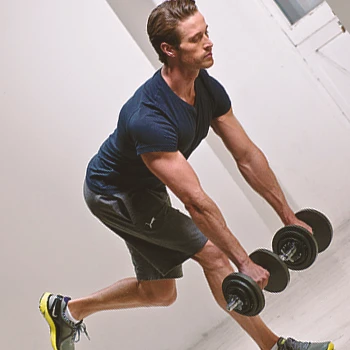
From my personal training experience, I've found the single-leg Romanian deadlift to be incredibly effective.
I remember working with an aspiring athlete client; this exercise enhanced their performance and was pivotal in rehabilitating a minor hamstring injury.
It's adaptable for various rehab stages, aiding in healing and strength recovery.
This exercise also strengthens the hamstrings and improves one-legged stability in the locomotor system.
How to Perform Single-Leg Romanian Deadlifts
- Place the barbell on the floor and load it with appropriate weight plates so you can perform 6 reps on each leg.
- Pick the barbell from the floor while keeping your back flat.
- Assume a standing position where the barbell hangs from your hands in the anatomical position.
- Slightly bend your right knee and lift the left foot from the ground.
- Start the exercise by bending forward with your torso while remaining with the right foot on the ground and driving the left back and upwards.
- Stop when your wrists pass the level of your knees, and hold that position for one second.
- Reverse the motion to return to the starting position.
- Repeat for 6 reps, 4 sets, and rest for 3 minutes between the sets.
Romanian Deadlift Alternatives

Here are some popular Romanian deadlift alternatives you may add to your workouts.
Good Morning
According to research published by PeerJ, Good mornings are excellent exercises that can bulletproof your hamstrings and build a superior posterior chain [3].
They are useful for beginners, but I recommend more advanced lifters transition to Romanian deadlift variations.
How to Perform Good Mornings
- Place the barbell on the squat rack and load it with the appropriate weight so you can perform at least 8 reps without a pause.
- Place the loaded barbell on your upper back and unrack it. Take two steps back to have enough space to perform the exercise.
- Assume a hip-width stance with the barbell resting on your upper back.
- Start the exercise by bending your torso forward without changing the original position of your knees.
- When your torso almost becomes parallel to the ground, reverse the motion to return to the starting position.
- Repeat for 8 reps, 3 sets, and rest for 90 seconds between the sets.
Hip Thrust
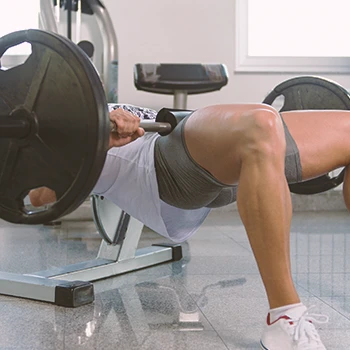
Throughout my training career, I've frequently included hip thrusts in client routines to enhance glute strength and power. Studies in the Journal of Sports Science and Medicine confirm their effectiveness in increasing lower body strength [4].
You can also implement this exercise into the complex or contrast training and pair it with exercises such as kettlebell swings or plyo box jumps to build explosive strength.
How to Perform a Hip Thrust
- Place the barbell on the floor and load it with appropriate weights so you can perform 8 reps without a pause.
- Place a flat bench behind you with an appropriate height so you can execute the full range of motion of the exercise, and don’t touch the floor in the bottom position of the lift.
- Place your shoulder blades on the flat bench and your legs below the barbell.
- The barbell should be at the level of your hips.
- Lift the barbell off the floor while maintaining your shoulder blades on the flat bench.
- Start the exercise by bending your hips to lower the loaded barbell toward the ground.
- When you reach the bottom position, hold it for one second.
- Explosively extend your hips to push the barbell to the starting position.
- Hold the top position of the lift for one second while forcefully contracting your glutes.
- Repeat for 8 reps, 4 sets, and rest for 3 minutes between the sets.
How to Add Romanian Deadlifts to Your Workout

Introducing Romanian deadlifts into my clients' routines has shown me their value beyond isolation exercises.
As a demanding, multi-muscle exercise, I advise doing Romanian deadlifts early in workouts. However, for those accustomed to their energy demands, they can be effective towards the end.
Typically, compound exercises are best done early, and isolation exercises are done later. In a push/pull/leg split, fit Romanian deadlifts into pull or leg days, depending on your weekly schedule.
Additionally, incorporating dietary strategies and supplements, like protein for muscle repair, enhances RDL benefits for strength and muscle growth.
FAQs
How Do You Do an Rdl for Beginners?
To do a Romanian deadlift (RDL) as a beginner, you should start in the same starting position but perform the exercise with an empty barbell.
This will make the whole single-leg Romanian deadlift variation substantially easier and allow you to practice the technique before performing the exercise with heavier weights.
How Do You Know if You’re Doing Rdls Correctly?
You must consider the range of motion, grip strength, position of your spine, and hip-hinge movement pattern to know if you are doing Romanian deadlifts correctly.
The main difference between the conventional deadlift and a dumbbell Romanian deadlift is the position of the working leg, which is completely fixed during the Romanian stiff leg deadlift exercise.
Should Rdl Be Heavy or Light?
It depends on your goal, muscle groups, and proper technique if you should be doing heavy or light RDLs.
To build muscle mass in the posterior chain, you must use progressive overload, meaning you will constantly increase the weight you lift but never compromise your lumbar spine.
References:
- https://www.ncbi.nlm.nih.gov/pmc/articles/PMC7046193/
- https://link.springer.com/article/10.1007/s00421-010-1735-9
- https://www.ncbi.nlm.nih.gov/pmc/articles/PMC4304869/
- https://www.ncbi.nlm.nih.gov/pmc/articles/PMC6544005/
About The Author
You May Also Like
